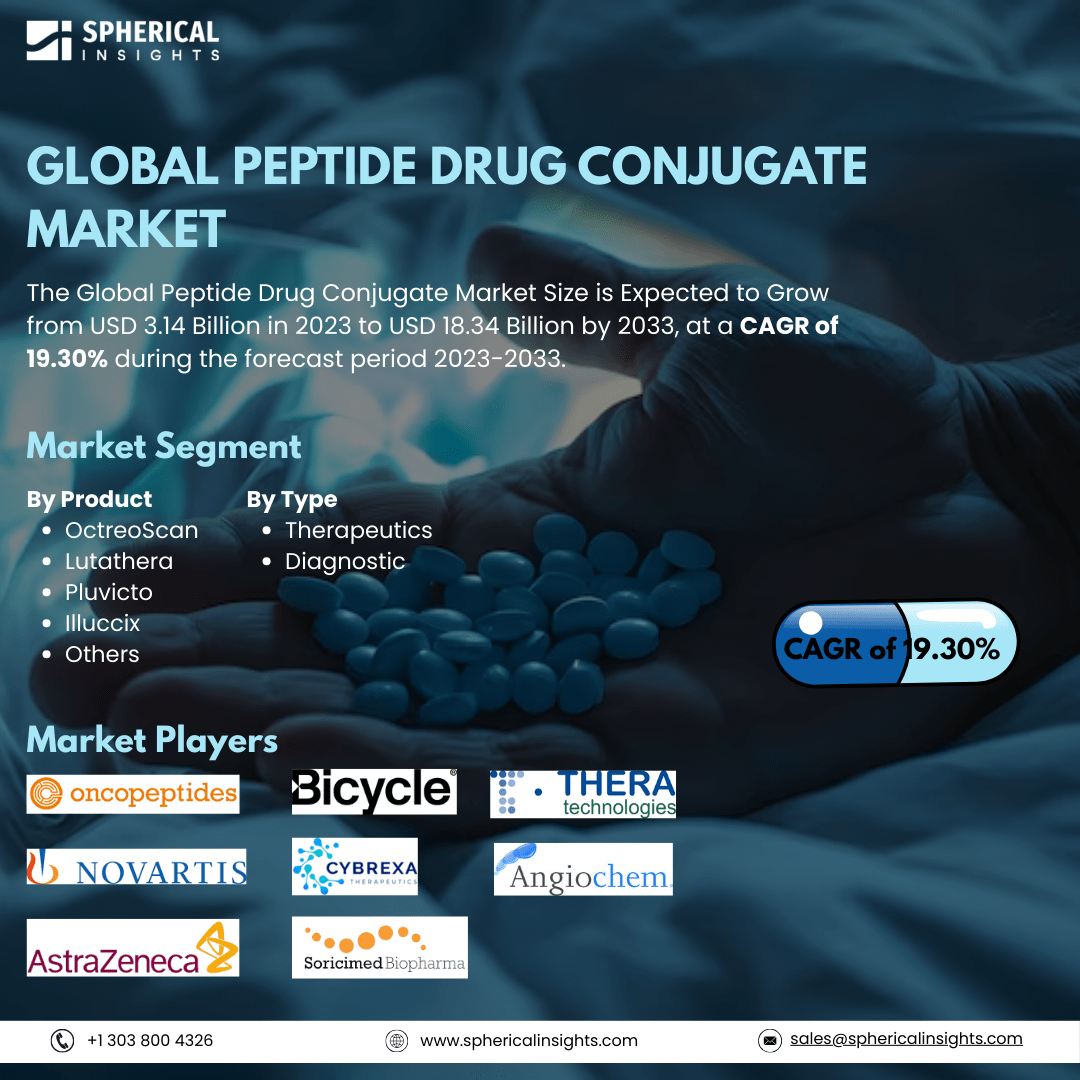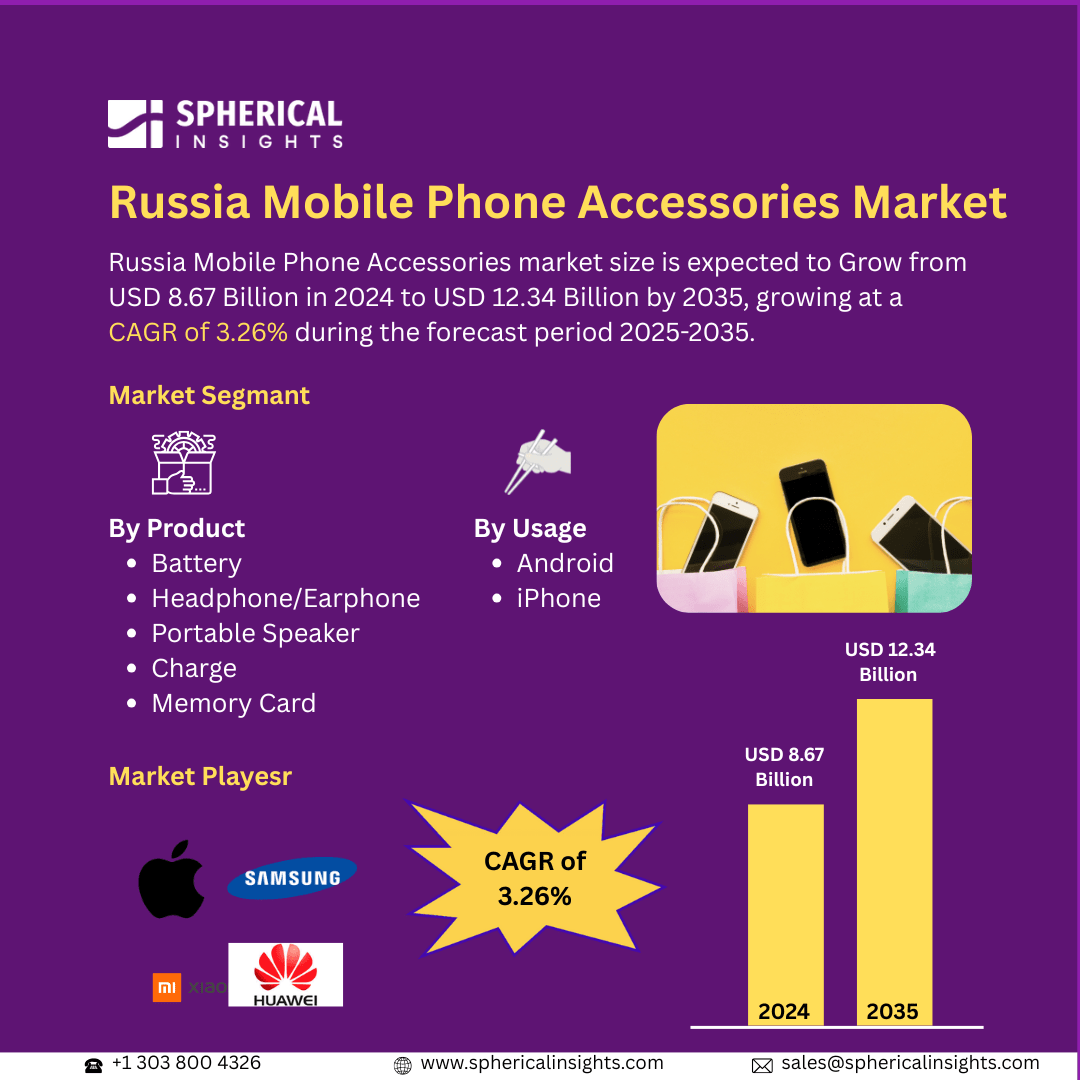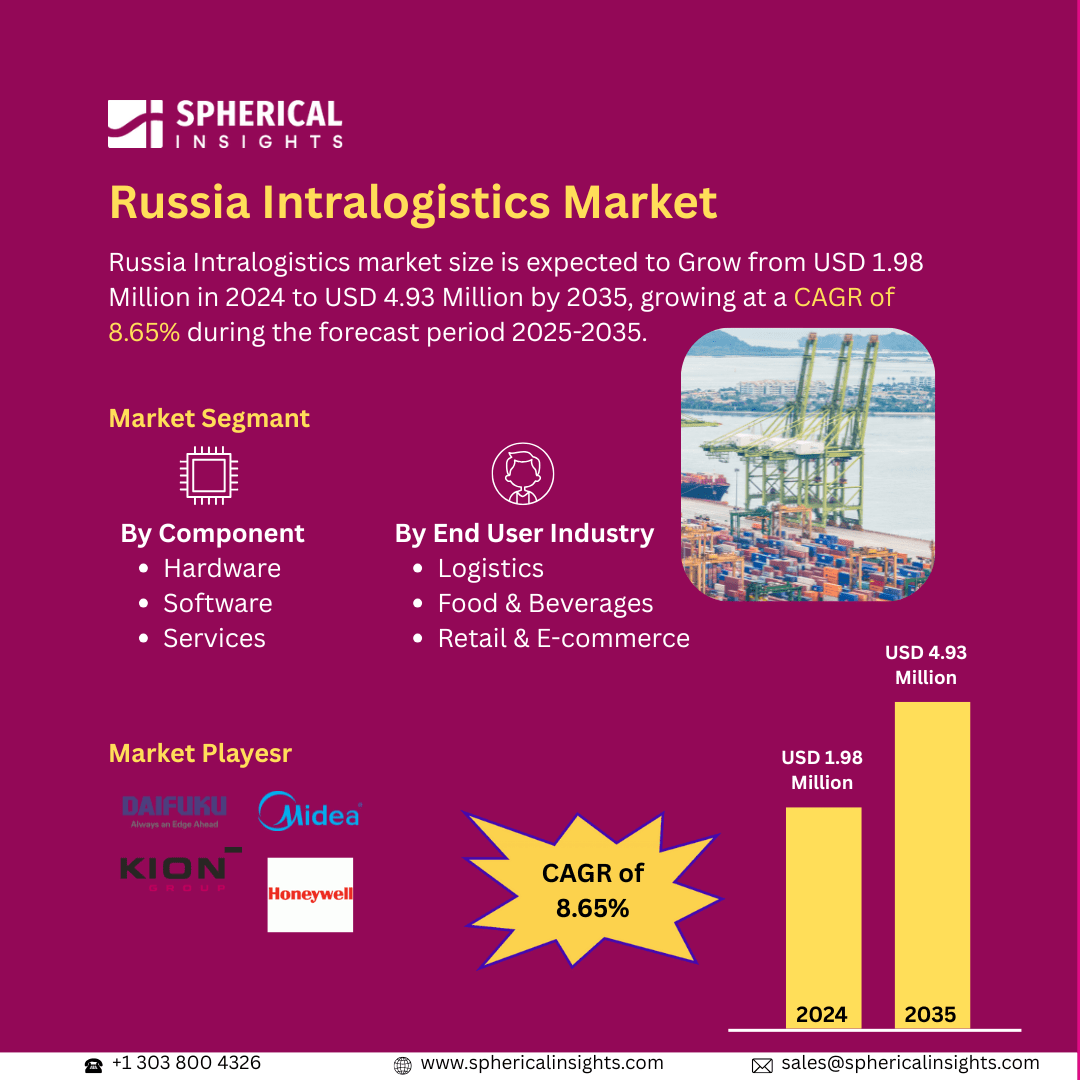Global Peptide Drug Conjugate Market Size To Exceed USD 17.57 Billion by 2033
According to a research report published by Spherical Insights & Consulting, The Global Peptide Drug Conjugate Market Size is Expected to Grow from USD 3.14 Billion in 2023 to USD 18.34 Billion by 2033, at a CAGR of 19.30% during the forecast period 2023-2033.
Browse 210 market data tables and 45 figures spread through 190 pages and an in-depth TOC on the Global Peptide Drug Conjugate Market Size, Share, and COVID-19 Impact Analysis, By Product (OctreoScan, Lutathera, Pluvicto, Illuccix, and Others), By Type (Therapeutics and Diagnostic), and By Region (North America, Europe, Asia-Pacific, Latin America, Middle East, and Africa), Analysis and Forecast 2023–2033.
The peptide-drug conjugate (PDC) market is the sector that deals in the research and development, manufacture, and commercialization of peptide-drug conjugates, a drug class that mingles peptides and cytotoxic medicines to promote enhanced targeted drug delivery. PDCs are prepared to increase efficacy and reduce the harmful effects of a drug by employing peptides' selective targeting capabilities at diseased tissues, including tumors, to cut down side effects. Furthermore, the world peptide drug conjugate (PDC) market is fueled by rising cancer incidence, the development of targeted drug delivery, and growing demand for personalized medicine. Increased drug effectiveness, decreased toxicity, and increased R&D expenditures further accelerate the growth of the market. Moreover, advancing biotechnology advancements and favorable regulatory clearances further fuel the development of PDC therapies globally. However, the high development costs, complex manufacturing processes, stringent regulatory approvals, limited clinical success rates, potential toxicity concerns, and challenges in large-scale production and stability are key restraints for the growth of the market.
The pluvicto segment accounted for the largest share in 2023 and is anticipated to grow at a significant CAGR during the forecast period.
On the basis of the product, the global peptide drug conjugate market is categorized into octreoscan, lutathera, pluvicto, illuccix, and others. Among these, the pluvicto segment accounted for the largest share in 2023 and is anticipated to grow at a significant CAGR during the forecast period. The segmental growth is due to its effectiveness in treating advanced prostate cancer, increasing approvals, and rising adoption in oncology. Growing incidence of cancer, strong clinical trial outcomes, and expanding healthcare infrastructure further drive its significant CAGR growth over the forecast period.
The therapeutic segment accounted for the largest share in 2023 and is anticipated to grow at a remarkable CAGR during the forecast period.
On the basis of the type, the global peptide drug conjugate market is categorized into therapeutics and diagnostic. Among these, the therapeutic segment accounted for the largest share in 2023 and is anticipated to grow at a remarkable CAGR during the forecast period. The segmental growth is due to the rising prevalence of chronic diseases, increasing adoption of peptide drug conjugates in targeted cancer therapies, and ongoing advancements in biotechnology. Growing investments in drug development, expanding clinical trials and high demand for innovative treatment options further drive its remarkable CAGR growth over the forecast period.
North America is projected to hold the largest share of the global peptide drug conjugate market over the forecast period.
North America is projected to hold the largest share of the global peptide drug conjugate market over the forecast period. The regional growth is propagated by the strong presence of key pharmaceutical companies, advanced healthcare infrastructure, and increasing investment in oncology research. The high prevalence of cancer, growing adoption of targeted therapies, favorable regulatory support, and rising clinical trials further drive market growth in the region.
Asia Pacific is expected to grow at the fastest CAGR growth of the global peptide drug conjugate market during the forecast period. The regional growth is attributed to the increasing cancer prevalence, rising healthcare investments, and growing demand for targeted therapies. Expanding biotechnology and pharmaceutical industries, improving regulatory frameworks, increasing clinical research activities, and greater accessibility to advanced treatments further drive the region’s rapid market growth.
Company Profiling
Major vendors in the global peptide drug conjugate market are Novartis AG, AstraZeneca, Oncopeptides AB, Bicycle Therapeutics, Cybrexa, Angiochem Inc., Soricimed Biopharma, Theratechnologies Inc., and others.
Key Target Audience
- Market Players
- Investors
- End-users
- Government Authorities
- Consulting and Research Firm
- Venture capitalists
- Value-Added Resellers (VARs)
Recent Development
- In January 2025, Oncopeptides AB declared that the Italian Official Journal (Gazetta Ufficiale) had formally published the favorable reimbursement decision for its medication Pepaxti (melflufen). This opens the door for Pepaxti's first sales in H1 2025 and represents the last regulatory milestone for its commercialization in Italy.
Market Segment
This study forecasts revenue at global, regional, and country levels from 2023 to 2033. Spherical Insights has segmented the global peptide drug conjugate market based on the below-mentioned segments:
Global Peptide Drug Conjugate Market, By Product
- OctreoScan
- Lutathera
- Pluvicto
- Illuccix
- Others
Global Peptide Drug Conjugate Market, By Type
Global Peptide Drug Conjugate Market, By Regional
- North America
- Europe
- Germany
- UK
- France
- Italy
- Spain
- Russia
- Rest of Europe
- Asia Pacific
- China
- Japan
- India
- South Korea
- Australia
- Rest of Asia Pacific
- South America
- Brazil
- Argentina
- Rest of South America
- Middle East & Africa
- UAE
- Saudi Arabia
- Qatar
- South Africa
- Rest of the Middle East & Africa



